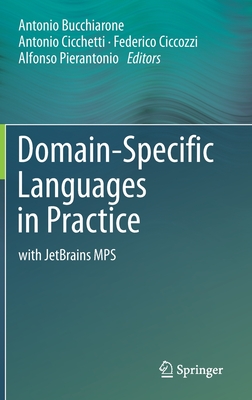Definition of Standard ML
Milner-Gulland, Robin, Milner, Robert, Macqueen, David
- 出版商: MIT Press
- 出版日期: 1997-05-21
- 售價: $1,500
- 貴賓價: 9.5 折 $1,425
- 語言: 英文
- 頁數: 132
- 裝訂: Quality Paper - also called trade paper
- ISBN: 0262631814
- ISBN-13: 9780262631815
-
相關分類:
Functional-programming
海外代購書籍(需單獨結帳)
買這商品的人也買了...
-
 Database in Depth (Paperback)
Database in Depth (Paperback)$1,235$1,170 -
 深入淺出物件導向分析與設計 (Head First Object-Oriented Analysis and Design)
深入淺出物件導向分析與設計 (Head First Object-Oriented Analysis and Design)$880$695 -
 深入淺出軟體開發 (Head First Software Development)
深入淺出軟體開發 (Head First Software Development)$680$537 -
 Making it Big in Software: Get the Job. Work the Org. Become Great. (Paperback)
Making it Big in Software: Get the Job. Work the Org. Become Great. (Paperback)$1,050$998 -
 人工智慧 ─ 現代方法 (Artificial Intelligence : A Modern Approach, 3/e)
人工智慧 ─ 現代方法 (Artificial Intelligence : A Modern Approach, 3/e)$500$450 -
 $294機器學習系統設計 (Building Machine Learning Systems with Python)
$294機器學習系統設計 (Building Machine Learning Systems with Python) -
 $1,728Time and Relational Theory, 2/e : Temporal Databases in the Relational Model and SQL (Paperback)
$1,728Time and Relational Theory, 2/e : Temporal Databases in the Relational Model and SQL (Paperback) -
 德國一流大學教你數學家的22個思考工具
德國一流大學教你數學家的22個思考工具$350$298 -
 $250Scala與Clojure函數式編程模式Java虛擬機高效編程
$250Scala與Clojure函數式編程模式Java虛擬機高效編程 -
 $414自己動手寫Java虛擬機
$414自己動手寫Java虛擬機 -
VLSI概論, 6/e
$520$468 -
 $294圖數據庫, 2/e (Graph Databases: New Opportunities for Connected Data, 2/e)
$294圖數據庫, 2/e (Graph Databases: New Opportunities for Connected Data, 2/e) -
 超簡單機器人動手做: 用隨處可見的材料發掘最先進的機器人學問 (Making Simple Robots: Exploring Cutting-Edge Robotics with Everyday Stuff )
超簡單機器人動手做: 用隨處可見的材料發掘最先進的機器人學問 (Making Simple Robots: Exploring Cutting-Edge Robotics with Everyday Stuff )$420$378 -
 Python 自動化的樂趣|搞定重複瑣碎 & 單調無聊的工作 (中文版) (Automate the Boring Stuff with Python: Practical Programming for Total Beginners)
Python 自動化的樂趣|搞定重複瑣碎 & 單調無聊的工作 (中文版) (Automate the Boring Stuff with Python: Practical Programming for Total Beginners)$500$425 -
 破解線上遊戲:電玩駭客的自動化 Bot 開發寶典 (Game Hacking: Developing Autonomous Bots for Online Games)
破解線上遊戲:電玩駭客的自動化 Bot 開發寶典 (Game Hacking: Developing Autonomous Bots for Online Games)$550$429 -
 $261視圖更新與關係數據庫理論 (View Updating and Relational Theory )
$261視圖更新與關係數據庫理論 (View Updating and Relational Theory ) -
 Deep Learning|用 Python 進行深度學習的基礎理論實作
Deep Learning|用 Python 進行深度學習的基礎理論實作$580$458 -
 $356深度學習算法實踐
$356深度學習算法實踐 -
 $390深度學習框架 PyTorch : 入門與實踐
$390深度學習框架 PyTorch : 入門與實踐 -
 $294自然語言處理與深度學習:通過 C語言模擬
$294自然語言處理與深度學習:通過 C語言模擬 -
 擴增人類|科技如何塑造新現實 (Augmented Human: How Technology Is Shaping the New Reality)
擴增人類|科技如何塑造新現實 (Augmented Human: How Technology Is Shaping the New Reality)$300$237 -
 Logic for Computer Science: Foundations of Automatic Theorem Proving, 2/e (Paperback)
Logic for Computer Science: Foundations of Automatic Theorem Proving, 2/e (Paperback)$1,350$1,283 -
 領域驅動設計:軟體核心複雜度的解決方法 (Domain-Driven Design: Tackling Complexity in the Heart of Software)
領域驅動設計:軟體核心複雜度的解決方法 (Domain-Driven Design: Tackling Complexity in the Heart of Software)$680$530 -
 $621SQL 與關係數據庫理論, 3/e (SQL and Relational Theory: How to Write Accurate SQL Code, 3/e)
$621SQL 與關係數據庫理論, 3/e (SQL and Relational Theory: How to Write Accurate SQL Code, 3/e) -
 小輕快跨平台:王的編輯器 Visual Studio Code 聖經
小輕快跨平台:王的編輯器 Visual Studio Code 聖經$880$695
相關主題
商品描述
Standard ML is a general-purpose programming language designed for large projects. This book provides a formal definition of Standard ML for the benefit of all concerned with the language, including users and implementers. Because computer programs are increasingly required to withstand rigorous analysis, it is all the more important that the language in which they are written be defined with full rigor. One purpose of a language definition is to establish a theory of meanings upon which the understanding of particular programs may rest. To properly define a programming language, it is necessary to use some form of notation other than a programming language. Given a concern for rigor, mathematical notation is an obvious choice. The authors have defined their semantic objects in mathematical notation that is completely independent of Standard ML. In defining a language one must also define the rules of evaluation precisely--that is, define what meaning results from evaluating any phrase of the language. The definition thus constitutes a formal specification for an implementation. The authors have developed enough of their theory to give sense to their rules of evaluation. The Definition of Standard ML is the essential point of reference for Standard ML. Since its publication in 1990, the implementation technology of the language has advanced enormously and the number of users has grown. The revised edition includes a number of new features, omits little-used features, and corrects mistakes of definition.
作者簡介
David MacQueen is Professor of Computer Science at the University of Chicago.












